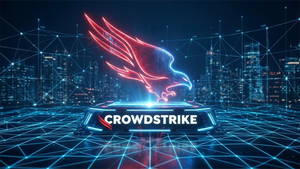Onsemi Could Be Set Up For a Solid Rebound: Here's Why

Onsemi (NASDAQ: ON), formerly known as ON Semiconductor, is a chip stock that hasn’t had a great 2024 so far. The company’s shares are down 12%, underperforming its industry. The Invesco PHLX Semiconductor ETF (NASDAQ: SOXQ) is up 22% this year. However, some indicators give reason to believe there may be a comeback for Onsemi. I’ll break down what the company does and what those factors are.
Onsemi: Powering Electric Vehicles
Onsemi primarily makes chips for automotive and industrial purposes. In 2023, 52% of the company’s revenue came from the automotive industry, and 28% came from industrials. The remaining 20% includes business from data centers, 5G, and other sources.
The company specifically mentions that its products help meet the needs of the electric vehicle industry. It differentiates itself by being a leader in silicon carbide chips, as opposed to straight silicon.
The material uses energy more efficiently than traditional silicon, giving it an advantage when it comes to making EVs. One key limitation of EVs is their range capability without requiring a recharge. EVs can travel farther if manufacturers use silicon carbide components.
At a recent conference put on by Citigroup (NYSE: C), Onsemi’s CFO, Thad Trent, emphasized that the use of silicon carbide still has significant room to grow. He noted that silicon carbide is only used in 22% of EV production. When subtracting Tesla (NASDAQ: TSLA), it is only 6% penetrated.
He added that the company sells both silicon carbide and regular silicon chips, but silicon carbide makes up 85% of those sales. So, silicon carbide penetration is increasing.
Onsemi's Manufacturing Enhancements Position It to Benefit When Demand Rises
Onsemi hasn't seen substantial year-over-year revenue growth for seven quarters. In 2023, revenue dropped by around 1%, and in Q2 of this year, the company experienced a 17% decline in revenue. As an important supplier of EV parts, looking at the growth trajectory of that market can help signal what might happen to Onsemi’s growth.
Significant concerns about EV sales this year have been largely brought on by declines in automotive sales revenue and vehicle deliveries for Tesla. The company’s automotive sales dropped 13% and 9% in the first two quarters of 2024 compared to the previous year's quarters.
However, industry-wide data shows evidence that these concerns may be overblown. Globally, EV sales volumes are up 22% in the first half of this year compared to the first half of 2023. So, why is Onsemi seeing declines in its revenue? A large part of this is that EV companies had an oversupply of Onsemi’s chips in their inventory. They are now working through that supply buildup. The company says demand is stabilizing.
Despite this lagging revenue growth, the company has largely maintained its gross margin, which has fallen less than 200 basis points since Q1 2023 to 45%. When it comes to Onsemi, focusing on gross margin is particularly important. It shows how the company can maintain profitability in its production despite changes in the amount of product it produces.
The company’s utilization rate, or the amount it produces as a percentage of its total production capacity, has decreased nearly 20% from its peak to 65%. The CFO noted that in the past when utilization rates were that low, gross margins were in the low 30% range. This shows that the company has made a massive improvement in maintaining its gross margins even when production drops significantly.
That is important in the semiconductor industry, where supply and demand have sometimes shown significant imbalances. The company could see a big jump in profits and revenues once demand for its products recovers and its utilization rate rises.
A positive sign for future demand is the recent deal it inked with Volkswagen (OTCMKTS: VWAPY) to become the company’s primary supplier of the firm’s power box solution. Volkswagen ranks among the top five companies in terms of EV sales.
Taking Valuation and Analyst Targets Into Account
The company's valuation looks favorable compared to a peer group of 43 large-cap semiconductor companies based in the U.S., Canada, or Asia Pacific.
The firm’s forward price-to-earnings (P/E) ratio of 18x is 35% below the median of the group.
However, Wall Street analysts have a relatively modest outlook on the firm overall.
The average price target implies an upside of 18%. Evercore ISI is particularly bullish, seeing an upside of 43%.
More News
View MoreRecent Quotes
View MoreQuotes delayed at least 20 minutes.
By accessing this page, you agree to the Privacy Policy and Terms Of Service.




